
Wen Haoding, Vice President, Clutch Systems and Transmission Technology, Automotive Division, Schaeffler Investment (China) Co., Ltd.
The Dual Clutch Transmission (DCT) is known for its high power performance and low fuel consumption. Transmissions with dry dual clutches are particularly prominent because the drag torque and energy losses required for clutches and transmissions operated by electro-hydraulic control systems are minimal. Therefore, in terms of efficiency, the dry dual clutch transmission is a benchmark in the field of automatic transmissions.
Transmission energy saving and emission reduction progress
In the past 10 years, the progress of some transmission energy-saving and emission reduction technologies is summarized as follows:
(1) Manual transmission MT Low viscosity oil reduces drag torque; improved dual mass flywheel damper (DMF) technology greatly improves the stability of low engine speed operation, which has been confirmed by a large number of practical applications; The bearing is replaced by a ball bearing (for example, a rear axle bearing).
(2) Hydraulic automatic transmission AT gear logarithm increase, wider speed ratio range; improved damper technology reduces or avoids torque converter slip caused by lower lock speed.
(3) CVT with CVT torque capacity up to 400 N·m uses Schaeffler LuK efficient chain technology.
(4) DCT adopts software to control the clutch start and gear shift DCT technology; it can reduce the fuel consumption 5% start-stop technology (only one clutch is needed for starting, no additional electronic pump or battery is needed); New electromechanical actuator for gear and clutch operation.
Compared with the traditional AT with a hydraulic torque converter, the above technology can achieve a total energy saving and emission reduction effect of up to 15%.
The first choice for transmission energy saving and emission reduction - DCT
An important goal of the new automatic transmission is to significantly reduce the fuel consumption of the car. In addition, the innovative transmission design wins new customers on the market and those with a low share of automatic transmissions. As one of the most critical technologies in this field in recent years, the first mass production of the dual clutch transmission was the six-speed direct-shift transmission (DSG) introduced by Volkswagen in 2003 – the oil-cooled wet dual clutch. The development potential of the dual-clutch transmission through fuel consumption and its inherent characteristics has helped Volkswagen gain a new market share, and with the excellent performance of the dual-clutch transmission, Volkswagen has become one of the innovative sources of power in the field of automatic transmissions.
Volkswagen's subsequent seven-speed dual-clutch transmission (hereafter referred to as 7-DSG) further implemented the concept of DCT, with the goal of continuing to significantly reduce fuel consumption and expand the range of applications, especially for engines below 250 N·m. One of the core components of this transmission is the dry double clutch launched by Schaeffler in Germany in the spring of 2008.
Compared with wet DCT, the dry DCT efficiency can be increased by 6%, and the resulting fuel consumption is reduced as shown in Fig. 1. One of the main reasons for the increase in efficiency is the way the clutch is cooled. The wet clutch uses an oil-cooled method to cool the friction parts. This produces an oil flow rate of approximately 30 L/min at high output (different designs will vary). The dry clutch is cooled by air convection. Reducing the maximum oil flow rate of the wet clutch can reduce the loss of cooling energy, but the stability may be reduced. Even with specially developed clutch friction materials, the additives in the oil at high temperatures may still be damaged so that the friction characteristics are not met.
DCT system requirements
Dry dual clutches require far more functionality and stability than manual transmissions, new safety requirements, higher comfort requirements, and high power operating conditions, including automatic shift selection, which is the main requirement for improvement. The reasons include:
1) The clutch is automatically disengaged when the transmission control fails.
2) High thermal stability at low weight and limited installation space.
3) High wear resistance of the friction system and stability of the clutch system characteristic curve.
4) Compensation for axial and angular deviation between the engine and the transmission.
5) Isolation of torque fluctuations from the engine.
6) Efficient actuators for clutches and transmissions, etc.
Based on the experience of the manual transmission MT and the mechanical automatic transmission AMT clutch, Schaeffler has developed a number of dry dual clutches to meet ever-increasing demands. Figure 2 shows the dry dual clutch, dual mass flywheel and clutch actuator for the Volkswagen 7-DSG.
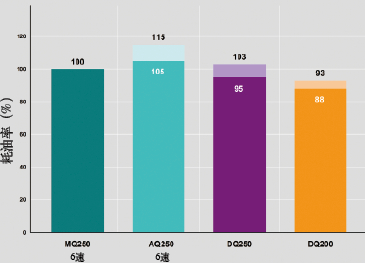
Figure 1 7-DSG (DQ200) and manual transmission (MQ250), torque converter automatic transmission (AQ250)
And 6-DSG (DQ250) fuel consumption comparison
Torsional isolation
With the increase of torque fluctuation and the improvement of driving comfort requirements, modern internal combustion engines put forward higher requirements for vibration isolation of damper and clutch system. In the case of DCT, the following two main factors further increase the requirements for vibration damping performance. First, an increase in transmission efficiency results in a reduction in damping in the transmission; secondly, there is always a set of gears that are not carried, and a non-loaded gear set is subject to vibration by the carrier gear set.
In manual transmission applications, the external curved spring damper has proven to be an effective vibration isolation measure. For dual clutches, the use of a driven disc with a damper in the two driven discs is also suitable for vibration attenuation. For non-turbocharged gasoline engines, the driven disc with damper and the targeted clutch slip control are also satisfactory solutions.
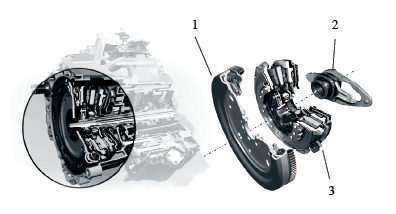
Figure 2 Dry double clutch in Volkswagen 7-DSG
1. Curved spring damper 2. Engagement system 3. Double clutch
Efficient actuators for DCT systems
Lever actuator
The actuators that operate the dry clutch are highly demanding, including dynamics, accuracy, durability, efficiency, installation space and weight. For the 7-DSG, Volkswagen has developed a compact hydraulic control system that is pressurized by the motor and switched and adjusted via the corresponding control valve. As an alternative to electro-hydraulic actuators, the electromechanical actuators developed by Schaeffler are in the form of lever actuators, as shown in Figure 3.

Figure 3 Lever actuator for clutch operation
1. motor 2. spring 3. screw 4. ball 5. lever
With an electromechanical actuator, the elastic energy storage structure in the actuator creates the force required to engage the clutch. It acts on the outer or upper end of the lever. The lever ratio is determined by the position of the ball screw, which is driven by a motor fixed to the transmission housing. The specific lever geometry allows for a variable lever ratio between the motor and the clutch. Therefore, the motor can operate at as constant and low power as possible - which can significantly reduce the size of the motor.
Common components that convert motor rotational motion into linear displacement do not meet the power density and efficiency requirements of dual clutch actuators. As a result, Schaeffler has developed a new ball screw with a four-row design with internal ball races to ensure minimal installation space. In addition, special balls have been developed to ensure smooth movement under 7000N bearing loads.
Therefore, in addition to further improving efficiency, the lever actuator is almost completely integrated into the clutch housing, requiring no additional installation space.
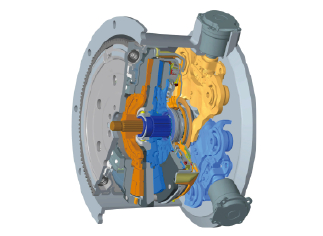
Figure 4 Dry double clutch system with electromechanical lever actuator
2. Motor drive transmission actuator
Schaeffler's Active Interlock actuator (see Figure 5) is part of the electric transmission actuator. It features a shifting finger unit with self-locking and disengaging function that works in conjunction with the internal shifting system of the transmission. By shifting the finger, the gears of any combination of the two sub-transmissions can be pre-selected and shifted. The active interlock mechanism ensures that all other gears of the same sub-transmission are separated before the other gear is engaged. With this protection mechanism, additional sensors for gear position detection, associated monitoring and emergency safety strategies can be dispensed with. The first DCT with active interlock actuators on the market has been applied to Hyundai models (Schaeffler offers dual clutches, torsional vibration dampers, motor-driven clutch actuators, motor-driven transmission actuators and drives) Control software, etc.).
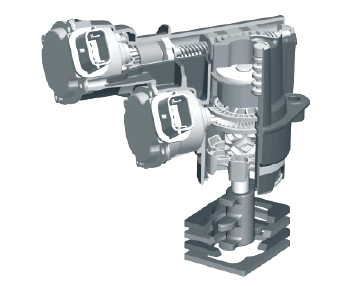
Figure 5 Electric actuator with active interlock mechanism transmission
Wet double clutch transmission
Wet DCT is especially suitable for vehicles with high torque, high vehicle weight or small radial installation space. The wet double clutch cooling circuit can be generated by an optimized independent low pressure cooling cycle system, so all requirements for dry dual clutch actuators are equally applicable to wet dual clutches. If the electromechanical actuator is used to directly control the wet double clutch through the joint bearing (see Figure 6), the hydraulic loss caused by the clutch operation is reduced, further reducing fuel consumption.
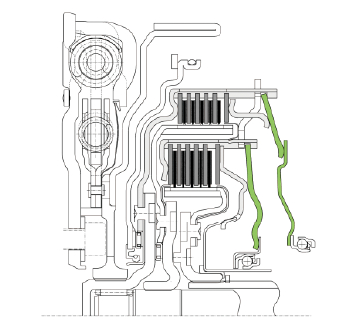
Figure 6 Wet double clutch with spliced ​​bearing
Although the wet DCT can use the same active interlock actuator as the dry DCT, its clutch actuators can vary. It is possible to operate a double centering splitter cylinder (CSC) or a hydraulic clutch actuator (HCA) via a hydraulic system. These configurations are as efficient as leveraged actuators because there is no significant hydraulic loss. At the same time, it is easier to ensure the tightness of the wet clutch.
Development of transmission energy saving and emission reduction technology
In the next 5 to 10 years, some predictable transmission energy-saving and emission reduction technologies include:
1) The range of the MT speed ratio is increased to achieve more overspeed conditions; the application of CPA is significantly increased.
2) AT is increased to 9 or 10 speeds, and a larger speed ratio range is achieved; CPA is used more to achieve efficient use of low engine speed conditions.
3) More LuK high efficiency chain applications in the CVT medium torque range.
4) The application of the DCT on-demand actuator (such as the Schaeffler Hydraulic Clutch Actuator HCA) on the new DCT transmission.
5) ESS (engine start-stop system) application ratio continues to increase.
6) Hybrids powertrain is more hybrid.
Based on this, part of the challenge in the development of transmission technology is to increase the gear pair and increase the speed ratio range without affecting the transmission weight and cost; the software control of the number and frequency of shifts does not affect the driver; Improvement of the comfort of the start-stop system (including NVH, vehicle start delay and other issues).
Transmission development trend
For the current development trend of various transmission types, the author believes that:
1) Different regions embody different technical orientations. AT has a good development trend in the North American market, CVT in the Japanese market, and DCT in the European market. In the Chinese market, several types of transmissions are likely to achieve significant development. .
2) From another perspective, AT is relatively more used in rear-drive models (RWD) (different in different markets), CVT and DCT in predecessor (FWD) models.
Due to different technical specifications and geographical preferences of vehicle manufacturers, the trend of transmission diversity will not change. Transmission efficiency and transmission losses, combined with hybridization, will play a vital role in market competition.
Conclusion
Many DCT market applications have proven that dry and wet dual clutches meet all the requirements of modern automatic transmissions. More application models will soon enter mass production. Combined with efficient actuators such as electromechanical actuators, DCT will be the benchmark for the highest demands on fuel consumption, power and life.
Independent of the internal combustion engine, the transmission with motor actuator is well suited for hybrid and start-stop systems. This has been reflected in the development of a number of transmission manufacturers and has been verified by Schaeffler's "ESG" prototypes, which use axially parallel-arranged motors. Similar products will be launched soon.
The dry and wet DCT with high-efficiency actuators will continue to lead the technological innovation of transmission energy saving and emission reduction together with the future torque converter transmission and CVT.
4 Inch Floor Trap,4 Inches Floor Drain,Stainless Steel 4 Inch Floor Trap,4 Inches Square Shower Drain
Kaiping City Jinqiang Hardware Products Co.,Ltd , https://www.jmpowerdrain.com
